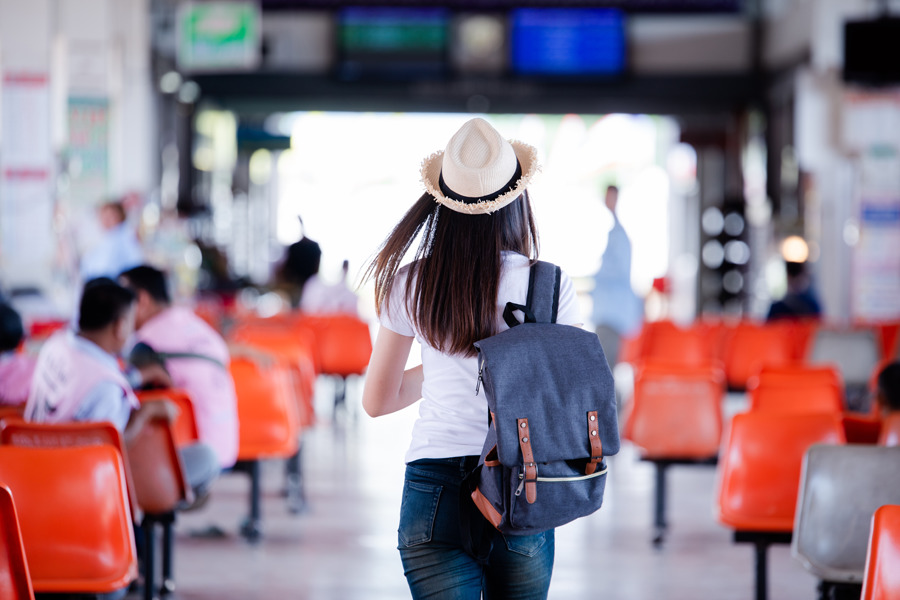Any experienced backpacker will tell you that weight is everything. When packing for your trip, your life will be so much easier if you can cut down your gear to just the necessities. However, you don’t have to go overboard and weigh all your plastic plates – this backpacking gear checklist is designed to ensure you don’t leave anything behind but that you also end up with an ultralight backpack.
What Is a Backpacking Gear Checklist?
A backpacking gear list is a catalog of all the items you should carry when going backpacking. It covers everything from shelter, clothes, and food to safety and emergency supplies. When used properly, it will ensure you bring along everything you need for your backpacking trip.
The Ultimate Backpacking Gear Checklist
The following backpacking gear checklist is divided into categories to make it easier for you to pack for your trip. Feel free to add or remove items in line with the type of trip you are going on, the number of people involved, and the amount of space you have.
Essentials
Regardless of the weather you are expecting – rainy, sunny, cold, or warm – make sure to carry the following essential backpacking items:
- Food
- Backpack
- Sleeping pad and bag
- Tarp or tent with guy lines or poles
Note: Snack foods and packaged freeze-dried foods are great for backpacking because they are light and easy to make. However, they are very sugar/sodium-rich, so practice moderation.
- Extra clothing layers
- Headlamp
- Water purification system and water bottles
- Sun protection
Personal Items
While you do not necessarily need the following items, having them with you can make your trip all the more comfortable. If you have the space, carry these items:
- Shovel
- Toilet paper
- Camp towel
- Toothpaste and toothbrush
- Prescription glasses or contacts (and case and drops)
- Prescription medicines
- Vitamins
Shelter
A safe and sturdy camping shelter will keep you comfortable and warm during your backpacking trip. Here is a list of everything you will need for nights in the wild:
- Tarp or tent
- Guy lines, stakes, or poles
- Ground tarp or cloth
- Camp pillow
- Sleeping bag
- Mosquito netting
Clothes
Think of backpacking as hiking, except you will be sleeping outside. This means that you should consider the weather and prepare adequately by packing the following clothing items:
- Gloves
- Beanie
- Hiking boots
- Top and bottom thermal underwear
- Fleece vest or jacket
- Fleece pants
- Lightweight synthetic jacket
- Sandals that allow you to wade streams
- Waterproof raincoat and pants
- At least two pairs of socks
- Moisture-wicking t-shirt
Kitchen Items
If you plan to cook during your trip, you should know that there are no kitchens in the wild. Check area regulations about open fires, and remember to bring the following:
- Quick cook or dehydrated food items
- Fuel and stove
- Utensils
- At least two pots.
- Multi-tool or utility knife
- Matches or a lighter
- Cups
- Reusable plates
- Biodegradable soap
- Ropes, hang bags, or bear canister for food storage
Navigation
It is very easy to get lost in the wild, especially if you are backpacking through a trail you haven’t used before. Carry the following tools for easy navigation:
- GPS
- Compass
- Map
- Guidebook
- Field guide
- Wilderness permit
Safety and First Aid
While you will likely not need these items, accidents can happen without warning, and the wild is not a good place to be unprepared. These basic supplies should help you keep an injured member of your party comfortable until you can get to a hospital:
- Duct tape
- Bandages
- OTC painkillers
- Wilderness First Aid Kit
- Satellite phone, two-way radio, or cell phone
- Whistle
- Sterilizing alcohol
- Emergency tarp
- Watch (with barometer or altimeter)
Weather and Sun Protection
The following items will keep you protected from the sun and other weather elements:
- Neck gaiter or bandana
- Insect repellant
- Mosquito head net
- Hat
- Sunscreen
- Lip balm
- Sunglasses
- Hat
Other Items (Optional)
The following items can be considered luxuries, but if you can make the space, they can make your trip all the more fun. Just pick two or three from this list:
- Digital camera
- Binoculars
- Bandana
- Trekking poles
- Journal
- Energy food (drink mixes and snack bars)
- Music instrument
- Waterproof pack cover
- Crampons
- Ice axe
Tips to Help You Backpack Like a Pro
Now that you know what to carry let’s get into the nitty-gritty of packing for a backpacking trip. These tips will help you optimize your load while keeping it light.
1. Food
Food is crucial to the success of any backpacking trip, especially if there are no stores where you are going. Consider writing a meal plan for your trip and packing calorie-dense but lightweight foods that are easy to prepare. Alternatively, you can dry different sauces, veggies, fruits, and meats for cooking when you get to your destination. This will require you to bring some spices along, which could add to your luggage but makes for healthier, cost-effective meals. Some easy-to-cook foods that could be ideal for your trip include minute rice, instant refried beans, instant potatoes, and pasta.
Tip: If you are uncertain of the way to go, try both methods. Bring some ready-to-eat snacks and foods as well as some quick-to-cook pre-prepared meals. This will give you variety.
2. Clothes
Generally, the clothes you bring with you will depend on the prevailing weather conditions where you are going. That said, remember the following fundamentals:
- Choose waterproof, breathable, and lightweight rain gear.
- Bring clothes that can be worn in layers. Goose down and fleece provide the best insulation and have the best warmth-to-weight ratio.
- Stay away from cotton as it tends to take longer to dry and absorbs moisture, which could lead to chafing or blistering.
- Carry clothes made from quick-drying, moisture-wicking fabrics that draw moisture away from your body and thermoregulate your skin. Good examples include synthetic blends, silk, bamboo, wool, polyester, and nylon.
3. Luggage
Once you finish packing, go through everything and remove any items you absolutely do not need. Removing one item here and there could really lighten your load.
Tip: Go for lightweight options when buying a sleeping bag, backpack, and shelter so you can further lighten your load.
Final Thoughts
Look inside the backpack of experienced backpackers that have been in the game for years, and these items are what you will find. As you use this Backpacking Gear Checklist, remember it is okay to carry a few luxury items as long as they will enhance your experience without significantly increasing your load. Happy backpacking!








